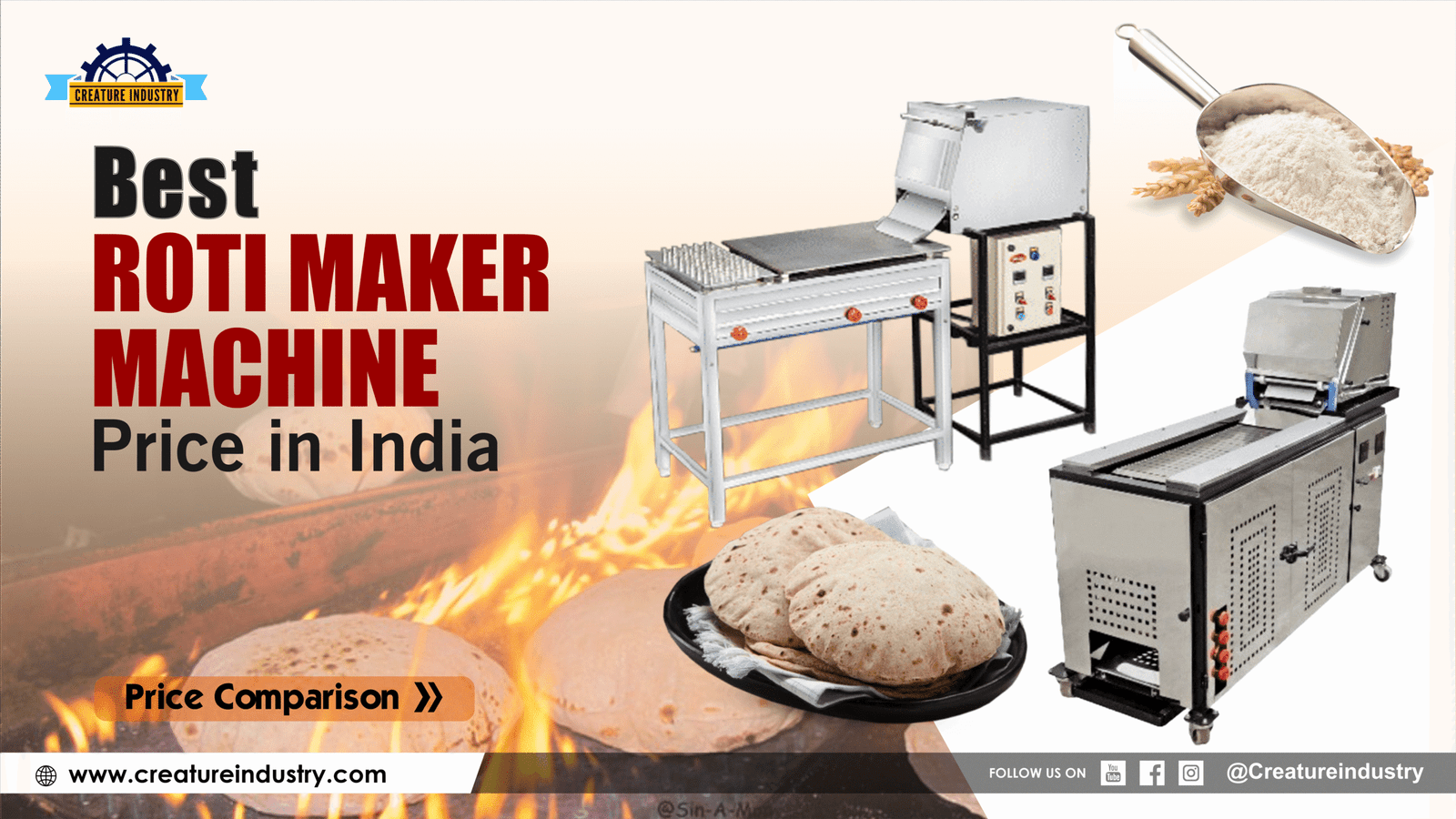Introduction
There is no denying the fact that the industrial revolution has changed the way people look at the world today, and the introduction of new technologies has made life simpler. For instance, big hotels and kitchens, and food ranches can now use roti makers without any hassle. It is also to be mentioned that people of India, along with the rest of the world, love eating roti. Not only does it help people become more efficient in their workplaces, but it also lowers the expenses and enhances the satisfaction of their clients.
Understanding Roti Maker Machines
What is a Roti Maker Machine?
The modern roti maker machine has many advanced features, such as automated pressing, flattening, and cooking, which make preparing rotis and chapatis easier.
Manual Roti Makers: Handy and economical, however, meant for only personal use.
Semi-automatic Roti Makers: Help to minimize manual tasks; however, some tasks still need to be completed manually.
Fully Automatic Roti Makers: Best for industrial use, fully able to process and prepare dough and rotis in bulk.
How It Works
Most commercial roti makers include dough feeders, pressing plates, heating elements, and conveyor belts. The dough is fed into the machine, pressed into uniform shapes, and cooked evenly within seconds.
Role of Roti Maker Machines in Food Industries
- Consistency in Quality: Every roti has the same size, thickness, and texture.
- Labor Efficiency: Reduces dependence on large kitchen staff.
- Hygiene & Safety: Minimal hand contact ensures clean and safe food preparation.
Productivity Benefits of Roti Maker Machines
1. Faster Production
A skilled cook can prepare 30–40 rotis per hour, while an automatic machine can produce up to 1,000 rotis per hour.
2. Uniformity and Quality
Every roti is perfectly round, soft, and evenly cooked – something manual cooking often struggles to achieve.
3. Reduced Downtime
Machines can run for long hours without fatigue, unlike human staff.
4. Scalable Operations
During peak business hours, machines ensure you never run short of supply.
5. Cost-Effectiveness
Though the upfront investment is higher, savings on labor and faster turnaround make them profitable long-term.
Applications in Different Food Businesses
- Restaurants & Hotels: Ensure quick service during rush hours.
- Corporate & Institutional Canteens: Serve hundreds of employees daily.
- Hostels & Messes: Meet daily high-volume needs without hiring extra staff.
- Catering Services & Events: Deliver large-scale meals efficiently.
- Packaged Food Industries: Produce frozen rotis for supermarkets and exports.
Technology & Innovation in Roti Makers
- Digital Controls & Timers: Easy to monitor temperature and baking cycles.
- Energy-Efficient Designs: Reduce electricity usage.
- Conveyor Systems: Enable continuous production lines.
- Future Trends: AI and IoT-enabled roti makers will further automate monitoring and control.
Challenges & Considerations
- Initial Investment: Machines can be costly, but ROI is fast.
- Training Needs: Staff must learn machine operation.
- Maintenance: Regular cleaning and servicing are required.
- Customization Limits: Some recipes like stuffed parathas may need manual preparation.
How to Choose the Right Roti Maker Machine
- Capacity: Choose based on daily production needs.
- Size & Speed: Match kitchen space and service requirements.
- Budget: Compare cost vs. features.
- Service & Warranty: Always check after-sales support.
Case Studies & Real-Life Examples
- A hotel in Delhi reported a 70% increase in service speed after installing a roti maker.
- A corporate canteen in Bangalore serves 1,000+ employees daily with just two machines.
- A packaged food brand scaled production to supply frozen rotis nationwide.
Environmental & Social Impact
- Reduced Food Waste: Machines produce uniform sizes, avoiding excess dough waste.
- Lower Carbon Footprint: Energy-efficient models save electricity.
- Worker Safety: Less repetitive stress for staff, improving overall working conditions.
Frequently Asked Questions (FAQs)
Q1. How much electricity does a roti maker machine consume?
Most commercial roti makers consume between 2 and 5 units of electricity per hour.
Q2. Can roti makers prepare parathas, naan, or tortillas?
Yes, advanced machines can prepare a variety of flatbreads with minor adjustments.
Q3. What is the average lifespan of a commercial roti maker?
With proper maintenance, machines can last 8–10 years.
Q4. Are roti makers suitable for small businesses?
Yes, semi-automatic versions are affordable and ideal for startups.
Q5. How many rotis can a fully automatic machine produce in an hour?
Depending on the model, between 500 and 1,000 rotis per hour.
Q6. Do machines maintain the authentic taste of rotis?
Yes, modern roti makers preserve the soft texture and authentic taste.
Q7. What is the price range of roti maker machines in India?
Commercial machines typically range from ₹13,000 to ₹55,000, depending on capacity and features.
Q8. How easy is it to clean and maintain the machine?
Most machines are designed for easy disassembly and cleaning.
Conclusion
Roti maker machines have become a game-changer for food industries, offering speed, consistency, hygiene, and scalability. While the initial investment may seem high, the long-term savings, improved productivity, and customer satisfaction make it a smart choice. As technology advances, these machines will continue to revolutionize how food businesses operate.



